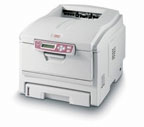The last time I tried Zimbra I was not too happy to see it installed its own versions of services like MySQL and Postfix. I started a thread on the Zimbra forum back then and it sparked a bit of debate. Unfortunately Zimbra 3.0 still assumes the install system is only going to be running Zimbra which makes it difficult to install on a system already running most of these services. Although I specified different ports to avoid conflicts my test install did not work at all very well and to top it off it managed to break the existing OpenLDAP installation (something to do with missing shared libraries).
David Harrison's musings on collaboration and I.T.




